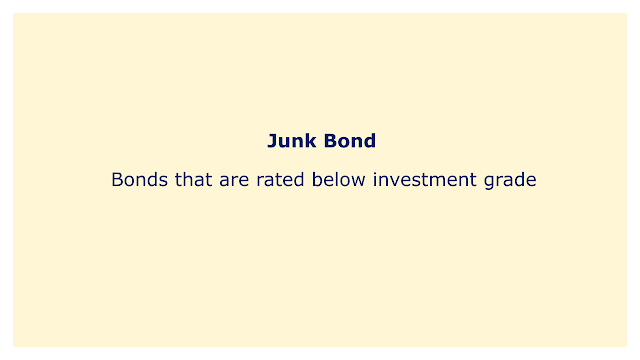 |
| Image: Moneybestpal.com |
Bonds rated below investment grade are referred to as junk bonds or high-yield bonds. Compared to investment-grade bonds, which are issued by businesses with stronger financial standing, these bonds often have a larger default risk. Because of the higher risk, junk bonds provide higher yields.
Junk bond issues are made by businesses with a poorer credit standing and possibly increased default risk. The financial stability of these businesses may be in jeopardy, or they may be operating in a sector that is having trouble right now. So, compared to investment-grade bonds, junk bonds are viewed as riskier investments.
Although trash bonds have a higher risk, they can still be a good investment for those looking for higher yields. These bonds have a weaker credit rating, so in order to make up for the increased risk for investors, they offer higher interest rates. So it's crucial for investors to thoroughly assess the dangers of junk bonds and diversify their holdings to lessen these dangers.
Junk bonds can be appealing to investors due to their higher yields as well as the fact that they are frequently less susceptible to interest rate changes than other forms of bonds. This is due to the fact that junk bonds are sometimes issued with shorter maturities than investment-grade bonds. As a result, they will mature sooner and the investor will have the opportunity to reinvest the proceeds at a higher interest rate if necessary.
Companies have raised funds through the sale of junk bonds for a range of goals, such as mergers and acquisitions, expansion, and debt refinancing. Private equity companies have also utilized them to finance leveraged buyouts.
Even though they have a bad reputation, junk bonds can still be a good investment for people who are ready to take on more risk. Yet it's crucial for investors to exercise due diligence and carefully weigh the dangers involved in making these kinds of investments.
